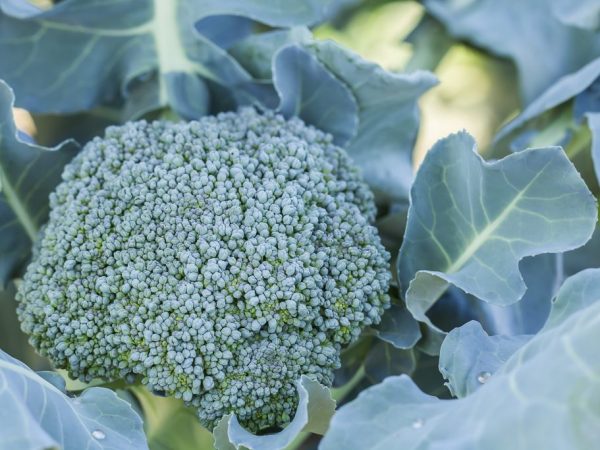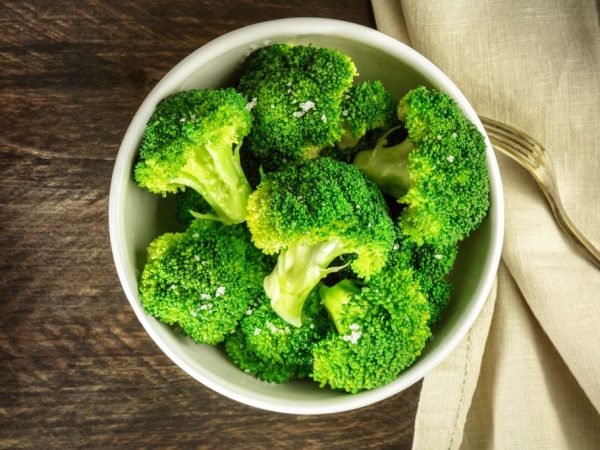Can you eat broccoli stalk and leaves?
The name of the type of broccoli cabbage comes from the Italian "brocco", which means "shoot" or "branch". Italians started eating broccoli from this part of the culture. At first, the plant was little known in Europe and America. Then the vegetable was also called Italian asparagus. After the second half of the twentieth century, the vegetable gained real popularity.

The benefits and harms of broccoli cabbage
Broccoli properties
If you have a medical condition, you should consult a dietitian or gastroenterologist before eating cabbage.
Composition
Broccoli is a source of fiber, potassium, phosphorus, iron, manganese, zinc and sulfur. It is rich in folic, nicotinic and ascorbic acids. It contains vitamins of groups A, B, E. K, calcium and beta-carotene.
Benefit
Broccoli has a number of health benefits that, if consumed correctly, help in the treatment of diseases. The benefits of a vegetable are as follows:
- normalizes metabolism;
- prevents gout or completely cures it;
- prevents nervous disorders;
- makes it easier to feel in case of heart diseases;
- prevents the development of heart attacks and strokes;
- restores and normalizes the digestive tract.
The substance anetoltrithione, contained in this cabbage, helps to reduce the likelihood of cancer cells in the rectum and mammary glands. If you eat vegetables constantly, you can really prevent the early development of atherosclerosis.
Broccoli is useful for people every day after exposure to radioactivity. Radioactive substances, salts of heavy metals are removed from the body. Cabbage is good for children, the elderly with diabetes, and pregnant women. The high content of vitamin B9 is the foundation for the development of the fetus.
Besides the listed broccoli:
- not inferior to milk in calcium content;
- contains 10% of the daily value of iron (in 100 g);
- 100 g of cabbage contains almost 100% of the daily value of vitamin C.
Contraindications to eating broccoli
Vegetable soups made only from cabbage are best avoided. They are high in adenine and guanine - harmful purine bases. When frying, carcinogens are released, which accumulate in the human body. Limiting the consumption of vegetables is necessary for people with the following diseases:
- gastritis and ulcers;
- increased acidity;
- a diet that excludes meals with coarse fiber;
- individual intolerance.
Using broccoli for food

Broccoli can be used to make many dishes
Outwardly, a vegetable looks like a flower - eating it also brings aesthetic pleasure. It is better to choose a young, fresh-looking plant.
When buying, you should pay attention to the color of the cabbage. You should not buy yellow: this means that it is overripe or was stored incorrectly. There will be no benefit from it.
The vegetable can be eaten every day. Not only the inflorescences are edible, but also the stem and leaves. There are many ways to cook.The vegetable is eaten fresh, boiled, steamed, fried or baked. It is often used to make sauces, pie fillings, omelets, vegetable side dishes. Can be made fresh cocktails or served as a pre-meal snack.
Using the stem for food
The stem is covered with a dense skin, therefore, the top layer is peeled before cooking. Then the plant is cut into pieces and used together with the inflorescences. The stem is made up of fibers and has a sweetish taste.
Broccoli Cooking Tips:
- It is better to clean with a vegetable cutter: it will remove a thin layer of the skin.
- Broccoli stalks without peel are added to the soup after boiling them in salted water.
- The stems are especially good in vegetable stews. They are cut into thin strips, blanched (dipped in boiling water for 3-5 minutes), and then placed in a container with water and ice.
- In order for the stump to bake perfectly, it is sprinkled with oil, and then evenly placed on a baking sheet.
For those who are on a diet, the steaming method is suitable. Such dishes can be eaten at night. The cooking time of the stems and inflorescences is different due to the structure. This must be taken into account when choosing a culinary dish for preparation.
Using the leaves for food
A large amount of vitamin A (up to 90%) makes the leaves especially useful.
The greener they are, the sharper the saturation. The enzymes they contain regulate metabolic processes in the body.
If treated with boiling water, the harsh taste will go away. The leaves will become more palatable for lovers of delicate greenery. Sometimes housewives use the leaves for pickling with cucumbers.
Young leaves are similar in taste and quality to spinach.
How to season broccoli
Combining broccoli is easy because it is a neutral vegetable. For example, in a salad, the leaves of this cabbage become a highlight. The inflorescences are suitable for decoration.
Leaves and stems are paired with seafood seasoned with soy sauce and sesame oil. If stewed, béchamel sauce is perfect.
The oil is combined with broccoli in salads. Leaves and stems do not have a strong taste. They can be a side dish for other, brighter in taste products, go well with fish or duck.
Broccoli is marinated in lemon juice, onions and paprika. Mayonnaise, sour cream, or yogurt are suitable for making a sauce or marinade.
Conclusion
Any part of the plant is edible and useful. Broccoli can and should be eaten regularly, in any form. Properly prepared leaves, stems and inflorescences will bring benefits.


